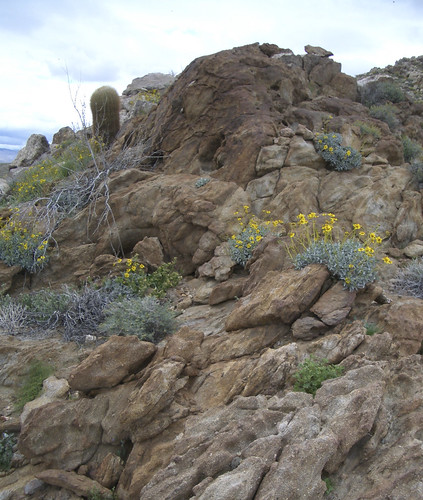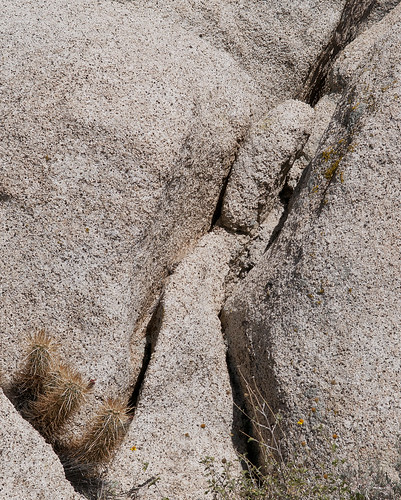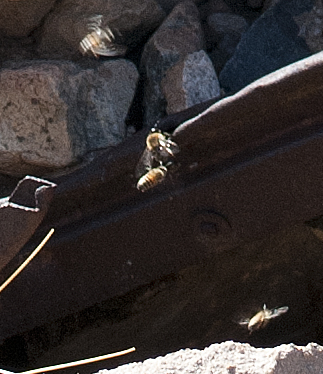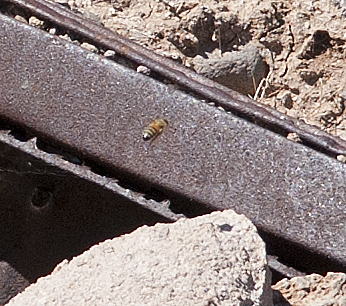|
ziphius Posts: 911
7/2/2012
|
Hey gang, I've been paying more attention to the presence of dragonflies and damselflies lately. I'm especially interested in correlating the presence of these insects to water sources. Dragonflys are not as reliable water-indicators as damselflies, merely because they can fly much farther and do migrate. If you see a damselfly however, you are probably pretty darn close to water. It occurred to me that collectively, using the power of the forum, a great database of dragonfly/damselfly occurrence in ABDSP could be constructed. I am volunteering to build a database and create GIS maps to share with the forum or any other interested researchers. Dragonflies and damselflies are rare enough where simply recording a GPS location (or approximate location, but the more precision, the better) would not be too onerous, I think. Heck, we could even add bees to the database if desired! All it would take is this: you see a dragonfly or damselfly in the park and record the location, plus any other bonus info you feel is important (whether it was specifically a dragonfly vs damselfly, color, flight direction, date, time of day, weather). Post your information to this topic and I'll slowly harvest the data and create some maps that all can enjoy. We'll probably learn things we never considered before. Photo below shows a damselfly on top, dragonfly below. - Jim
[IMG]http://i412.photobucket.com/albums/pp204/Berardius/Public%20Stuff/DragonfliesandDamselflies4.jpg[/IMG]
<em>edited by ziphius on 7/2/2012</em>
--
http://www.coyotelearning.org
|
|
|
link
|
|
dsefcik Administrator Posts: 2631
7/2/2012
|
How can we mere hiker mortals distinguish between the two easily? What are key differences between them?
--
http://www.sefcik.com
http://www.darensefcik.com
http://www.carrizogorge.com
|
|
|
link
|
|
ziphius Posts: 911
7/2/2012
|
Dragonflies will be much stockier and always hold their wings open when perched. Dragonflies have an abdomen (think tail) perhaps 4-5x the length of their thorax (think torso).
[IMG]http://i412.photobucket.com/albums/pp204/Berardius/Public%20Stuff/dragonflypinned.jpg[/IMG]
[IMG]http://i412.photobucket.com/albums/pp204/Berardius/Public%20Stuff/dragonflyanatomy.jpg[/IMG]
Damselflies are much more slender or dainty (think damsel-in-distress as a memory aid), with a much longer abdomens relative to their thorax. Damselflies will hold their wings closed when perched:
[IMG]http://i412.photobucket.com/albums/pp204/Berardius/Public%20Stuff/red-damselfly.jpg[/IMG]
Here is a prepared and 'pinned' damselfly, showing how long the abdomen is compared to the thorax. It would look like this in flight, but have its wings folded when perched:
[IMG]http://i412.photobucket.com/albums/pp204/Berardius/Public%20Stuff/damselflypinned.jpg[/IMG]
My buddy Dan has a good description of both in flight: Dragonflies: ZOOM. They are like F-14s. On the other hand, DAMSELFLIES.... you can almost see the individual wingbeats, they get beat around by turbulence more, less direct flight. They are like helicopters. David Attenborough video of damselflies:
Folks will probably see both kinds at obvious sources of water. I'm mainly interested in using these guys to help locate cryptic water sources, perhaps pools that have not been documented before, or long-forgotten springs. The opportunity to aggregate numerous folks' observations into an interesting story or pattern over time is exciting I think. A good general source of information these guys can be found at: http://www.ucmp.berkeley.edu/arthropoda/uniramia/odonatoida.html - Jim
edited by ziphius on 7/2/2012
edited by ziphius on 7/2/2012
<em>edited by ziphius on 7/2/2012</em>
--
http://www.coyotelearning.org
|
|
|
link
|
|
dsefcik Administrator Posts: 2631
7/2/2012
|
That seems easy enough, let me try my first one....
This is a Dragonfly because he is perched and his wings are expanded (Canebrake)

I will start keeping my eyes open now that I know the difference!
--
http://www.sefcik.com
http://www.darensefcik.com
http://www.carrizogorge.com
|
|
|
link
|
|
ziphius Posts: 911
7/2/2012
|
Nice one Daren! (and correct on the ID). Congrats on contributing the first data point. You recall the month? 
--
http://www.coyotelearning.org
|
|
|
link
|
|
tommy750 Posts: 1069
7/2/2012
|
ziphius wrote:
Nice one Daren! (and correct on the ID). Congrats on contributing the first data point. You recall the month? 
When can I start getting college level credits for reading these posts?? You guys are amazing! Haven't really paid attention to either insect, till now! You mentioned bees. Have stumbled onto two hives in the last month if that's of interest. Tom
|
|
|
link
|
|
dsefcik Administrator Posts: 2631
7/2/2012
|
ziphius wrote:
Nice one Daren! (and correct on the ID). Congrats on contributing the first data point. You recall the month? 
Sure, Oct 8th 2011
Google Earth Coordinates (UTM):
11 S
564499.69 m E
3640134.93 m N
--
http://www.sefcik.com
http://www.darensefcik.com
http://www.carrizogorge.com
|
|
|
link
|
|
dsefcik Administrator Posts: 2631
7/2/2012
|
tommy750 wrote:
You mentioned bees. Have stumbled onto two hives in the last month if that's of interest. Tom
Living hives?? or dried up ones? Any pictures? Honeycomb in rocks is interesting to me....
--
http://www.sefcik.com
http://www.darensefcik.com
http://www.carrizogorge.com
|
|
|
link
|
|
ziphius Posts: 911
7/3/2012
|
tommy750 wrote:
When can I start getting college level credits for reading these posts?? You guys are amazing! Haven't really paid attention to either insect, till now! You mentioned bees. Have stumbled onto two hives in the last month if that's of interest. Tom
Tom, the more the merrier. Maybe an honorary doctorate degree is in your future. I just ordered a copy of 'Dragonflies and Damselflies of The West', and am excited to get species IDs on whatever we can.  Active bee hives are probably even better indicators of cryptic water sources than far-ranging dragonflies. Where did you see your hives and when? - Jim Active bee hives are probably even better indicators of cryptic water sources than far-ranging dragonflies. Where did you see your hives and when? - Jim
<em>edited by ziphius on 7/3/2012</em>
--
http://www.coyotelearning.org
|
|
|
link
|
|
tommy750 Posts: 1069
7/3/2012
|
ziphius wrote:
tommy750 wrote:
When can I start getting college level credits for reading these posts?? You guys are amazing! Haven't really paid attention to either insect, till now! You mentioned bees. Have stumbled onto two hives in the last month if that's of interest. Tom
Tom, the more the merrier. Maybe an honorary doctorate degree is in your future. I just ordered a copy of 'Dragonflies and Damselflies of The West', and am excited to get species IDs on whatever we can.  Active bee hives are probably even better indicators of cryptic water sources than far-ranging dragonflies. Where did you see your hives and when? - Jim Active bee hives are probably even better indicators of cryptic water sources than far-ranging dragonflies. Where did you see your hives and when? - Jim
edited by ziphius on 7/3/2012
This was on 3-5-05 and is north of Indian Hill at: 32 45.696, -116 10.142 The exact center of the pic is where all the bees were entering/exiting.

Indian Hill Hive by tomteske, on Flickr
This was on 5-26-12 on the east flank of Sombrero Peak at: 32 50.264, -116 16.819 The bees ingress/egress was near the top of the crack.

Wild Bee Hive by tomteske, on Flickr
Finally, this Table Mt hive spotted 6-23-12 was in this half-buried PU frame just north of the PU body remnants at 32 38.550, -116 7.525 You can actually see the bees in this pic.

Metal Hive by tomteske, on Flickr
Any idea if these are European vs Africanized bees? Here's a few blurry enlargements from Table Mt. Wasn't about to get too close and wasn't carrying a telephoto. Tom

Table Mt Bees by tomteske, on Flickr

Table Mt Bee by tomteske, on Flickr
|
|
|
link
|
|
ziphius Posts: 911
7/9/2012
|
Well Daren, it looks like you photographed a 'Variegated Meadowhawk' (Sympetrum corruptum), either a female or immature. The kicker is, this species is highly migratory, often found in the desert southwest FAR from ANY water source.  They are distributed far and wide over the western U.S. Hey, did the sheep count happen already? - Jim They are distributed far and wide over the western U.S. Hey, did the sheep count happen already? - Jim
dsefcik wrote:
That seems easy enough, let me try my first one....
This is a Dragonfly because he is perched and his wings are expanded (Canebrake)

I will start keeping my eyes open now that I know the difference!
--
http://www.coyotelearning.org
|
|
|
link
|
|
dsefcik Administrator Posts: 2631
7/9/2012
|
ziphius wrote:
Well Daren, it looks like you photographed a 'Variegated Meadowhawk' (Sympetrum corruptum), either a female or immature. The kicker is, this species is highly migratory, often found in the desert southwest FAR from ANY water source.  They are distributed far and wide over the western U.S. Hey, did the sheep count happen already? - Jim They are distributed far and wide over the western U.S. Hey, did the sheep count happen already? - Jim
Cool, I love it when people know the names of floral and fauna and such, not sure I would have ever figured that one out. I guess my Dragonfly will build the opposite of what you want....
I got back around 11pm last night from the BHS count, I will post something up in the next few days when I get a chance.
--
http://www.sefcik.com
http://www.darensefcik.com
http://www.carrizogorge.com
|
|
|
link
|
|
TR Posts: 67
7/19/2012
|
Demselfly

June 2, 2012
Google Earth Coordinates (UTM):
11 S
551957 m E
3693075 m N
<em>edited by TR on 7/20/2012</em>
|
|
|
link
|
|
ziphius Posts: 911
7/20/2012
|
Thanks TR. I remembered this photo from your previous post and was trying to find that one in my field guide the other day. Another data point!  - Jim - Jim
TR wrote:
Demselfly

June 2, 2012
Google Earth Coordinates (UTM):
11 S
551957 m E
3693075 m N
edited by TR on 7/20/2012
<em>edited by ziphius on 7/20/2012</em>
--
http://www.coyotelearning.org
|
|
|
link
|